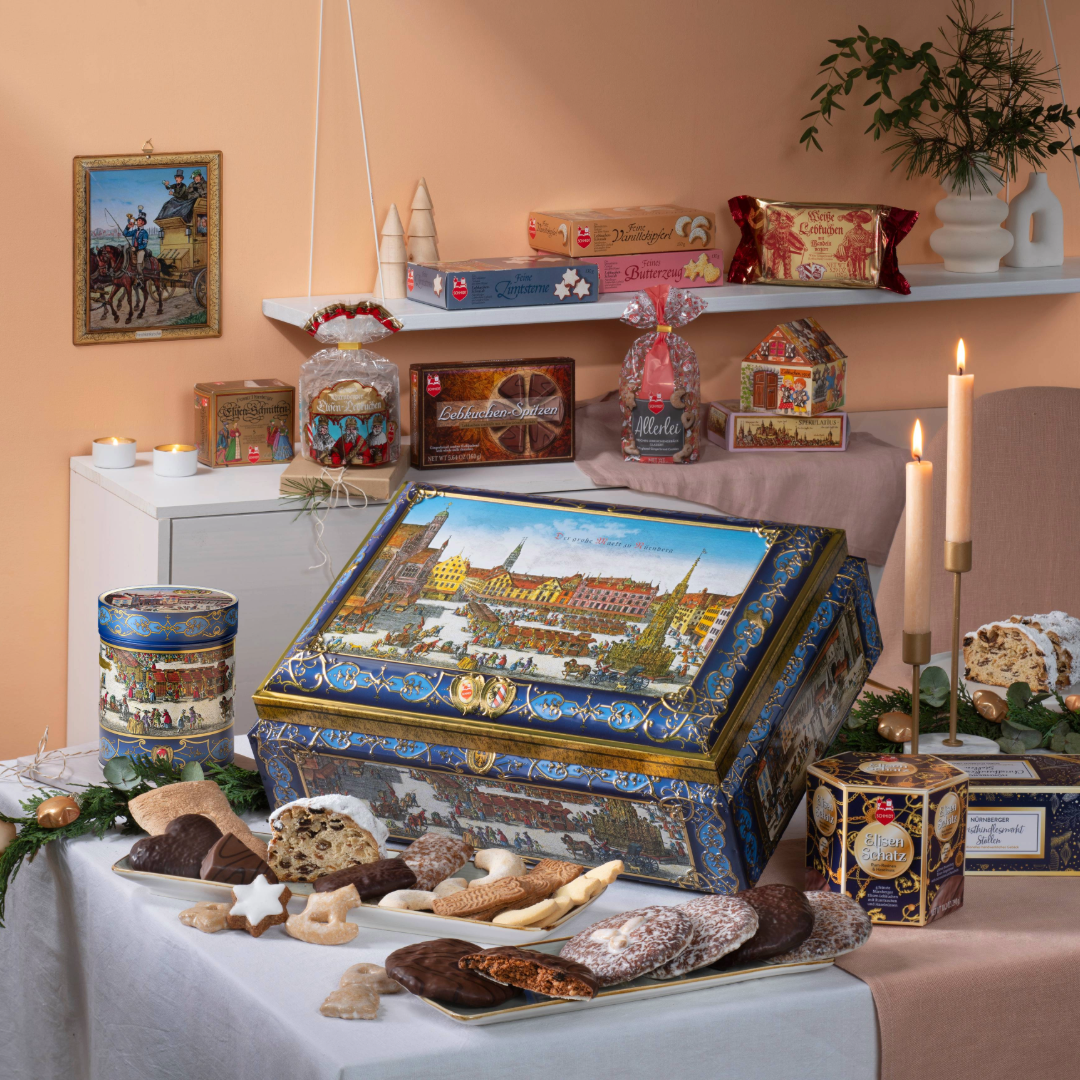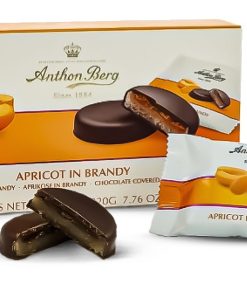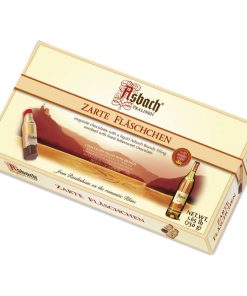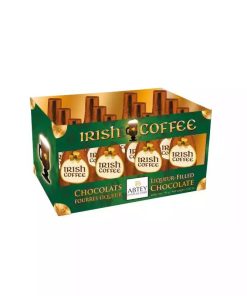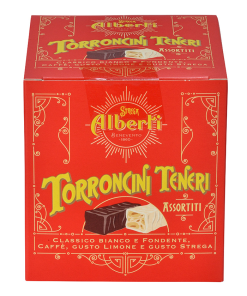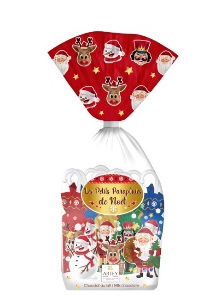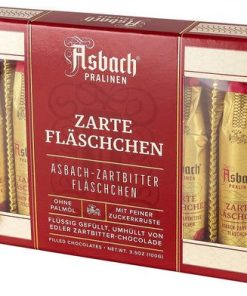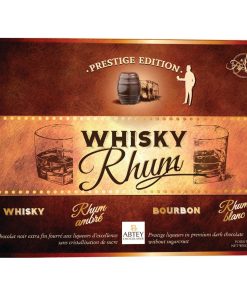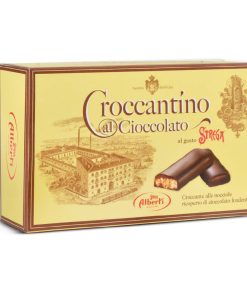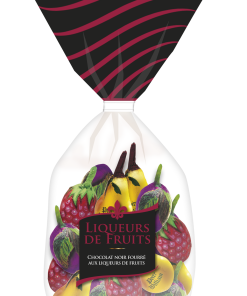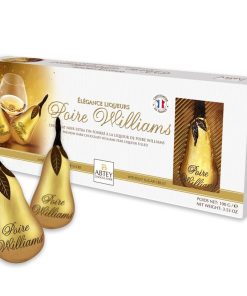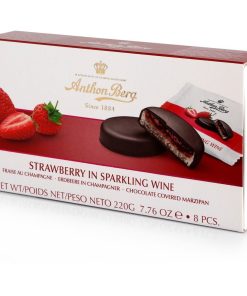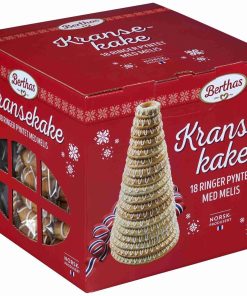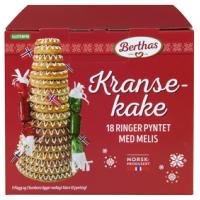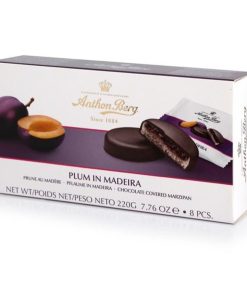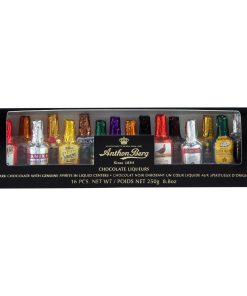Lebkuchen Schmidt Festive Chest 2024 Lebkuchen Schmidt
$ 154,95 $ 61,98
This year‘s festive chest features engravings on the lid and sides, with motifs of “Nuremberg around the year 1730” by the artist and engraver Johann von Delsenbach.
On the lid is an image of the prominent market in Nuremberg, known as the main market today. Many visitors were attracted to Nuremberg by the selection of fresh fruit, vegetables, and flowers, in addition to a wide range of other delicacies. Thanks to international trade relations, Nuremberg merchants supplied traders with goods and raw materials from distant countries. This is also how Lebkuchen originated in Nuremberg. Thanks to Nuremberg‘s convenient location, spices from the Orient were traded, which gave the Lebkuchen its unique taste to this very day.
The Beautiful Fountain can be seen on the right of the lid. Even back then, with its golden elements and the artistic draping of the allegories of the seven liberal arts, the fountain was truly a sight to behold. The fountain boasts a special feature: a brass ring embedded in the grating. Legend has it that anyone who turns this ring will be granted a wish. Whoever turns it three times will be blessed with many children.
The long side of the chest below the Beautiful Fountain shows a coachman with a hackney carriage. Incidentally, the term “Droschke” comes from the Russian language and describes a “light carriage”. At that time, the use of hackney carriages was only intended for residents and visitors to the royal house. In 1739, a royal cabinet order stipulated the provision of carriages for all city residents, and the “Lohnfuhrwesen” (carrying trade for a fee) began. The hackney carriage had its heyday in 1770, when it was used as the main means of transportation. However, due to the coachmen‘s poor behavior and the bad state of the cabs, it didn‘t take long for the number of cabs to dwindle again.
Part of the wall along Nuremberg‘s Old Town can be seen on the short side of the chest. We distinguish between three former city walls – the so-called oldest, penultimate and the final city fortifications. There is no definite evidence for the oldest city fortifications. This was probably not a continuous line of walls around the castle, but only ditches, palisades and mounds of earth, which had the purpose of protecting the area around the castle rock. The penultimate town fortification can be traced in more detail. After the Sebald half of the town was fortified prior to 1250, the rampart depicted in the motif is attributed to the Lorenz side of the town. Remains of both town fortifications can still be seen today. The so-called final town fortification was completed in 1452. To this day, it is possible to admire the structure around Nuremberg‘s Old Town, across a length of 5 kilometers.
A visit to Nuremberg is always worthwhile: on the one hand because of the Old Town, with its numerous works of art and buildings that are well worth seeing and experiencing. And, on the other hand, of course, because of the delicious Lebkuchen, which every visitor to Nuremberg definitely has to try.
- New: Elisen-Lebkuchen Treasure (Schatz), no wheat flour in the dough, our Lebkuchen of the Year, 290 g.
- Premium Elisen-Lebkuchen Bars,assorted, 125 g.
- Premium Elisen-Lebkuchen, iced, 275 g.
- Lebkuchen Triangles, 160 g.
- White Lebkuchen, decorated with almonds, 150 g.
- 2024 Festive Tin, filled with choice Lebkuchen, assorted, 300 g.
- Fairytale House, filled with chocolate coated Lebkuchen Hearts, 150 g., and a fairytale
- Nuremberg Butter Stollen, 500 g.
- Spicy Spekulatius Biscuits, 150 g.
- Allerlei Glazed Lebkuchen, 200 g.
- Cinnamon Stars, 130 g.
- Butter Biscuits, 130 g.
- Vanilla Crescents, 130 g.
- A High-Quality Nostalgic Metal Plate
- Printed description of motif
Net Weight: 2690 g. / 5.93 lbs.
Dimensions: 42 x 30 x 17 cm.
Professionally packed and fast shipping
Due to our long-term partnership in a long-standing partnership with UPS, FedEx, DHL and many other world-class carriers, we can offer various shipping options. Our warehouse staff is highly trained and will be able to pack your goods in accordance with our precise and exact specifications. Your goods will go through an exhaustive inspection and properly secured before they are shipped. We ship to thousands customers every day across multiple countries. This is a sign of our dedication to being the largest online retailer globally. We have distribution centers as well as warehouses located in Europe and the USA.
Note: Orders that contain more than one item are assigned a processing time depending on the item.
Prior to shipment, we will conduct a thorough inspection of the items you have ordered. Today, most orders will be shipped within 48 hours. The estimated delivery time is between 3-7 days.
Returns
Stock is dynamic, and not fully managed by us due to the involvement of many different parties, such as the factory and our warehouse. Stocks are subject to change at any moment. Be aware that your order may be out of stock when the order has been placed.
Our policy is for 30 days. If you haven't received your product within the 30 days period, we are unable to offer a refund or an exchange.
The item should not be used, and it must be in the original packaging. You must have the item in its original packaging.
Related products
Liquor Filled Chocolates
Asbach Brandy Chocolate Bottles in 20 pc. Gift Box AsbachChoc
AnthonBergMarzipan
Anthon Berg Chocolate with Marzipan & Apricot in Brandy Filling Anthon Berg
Liquor Filled Chocolates
Asbach Brandy Chocolate Bottles in 60 pc. Gift Box AsbachChoc
Liquor Filled Chocolates
Liquor Filled Chocolates
Asbach Brandy Chocolate Bottles in 8 pc. Gift Box AsbachChoc
Advent Calendars
Liquor Filled Chocolates
Asbach Brandy Chocolate Bottles in 12 pc. Gift Box AsbachChoc
Chocolate with Nuts
Holiday Cookies
Holiday Cakes
Liquor Filled Chocolates
AnthonBergMarzipan
Anthon Berg Chocolate with Marzipan & Plum in Madeira Filling Anthon Berg
